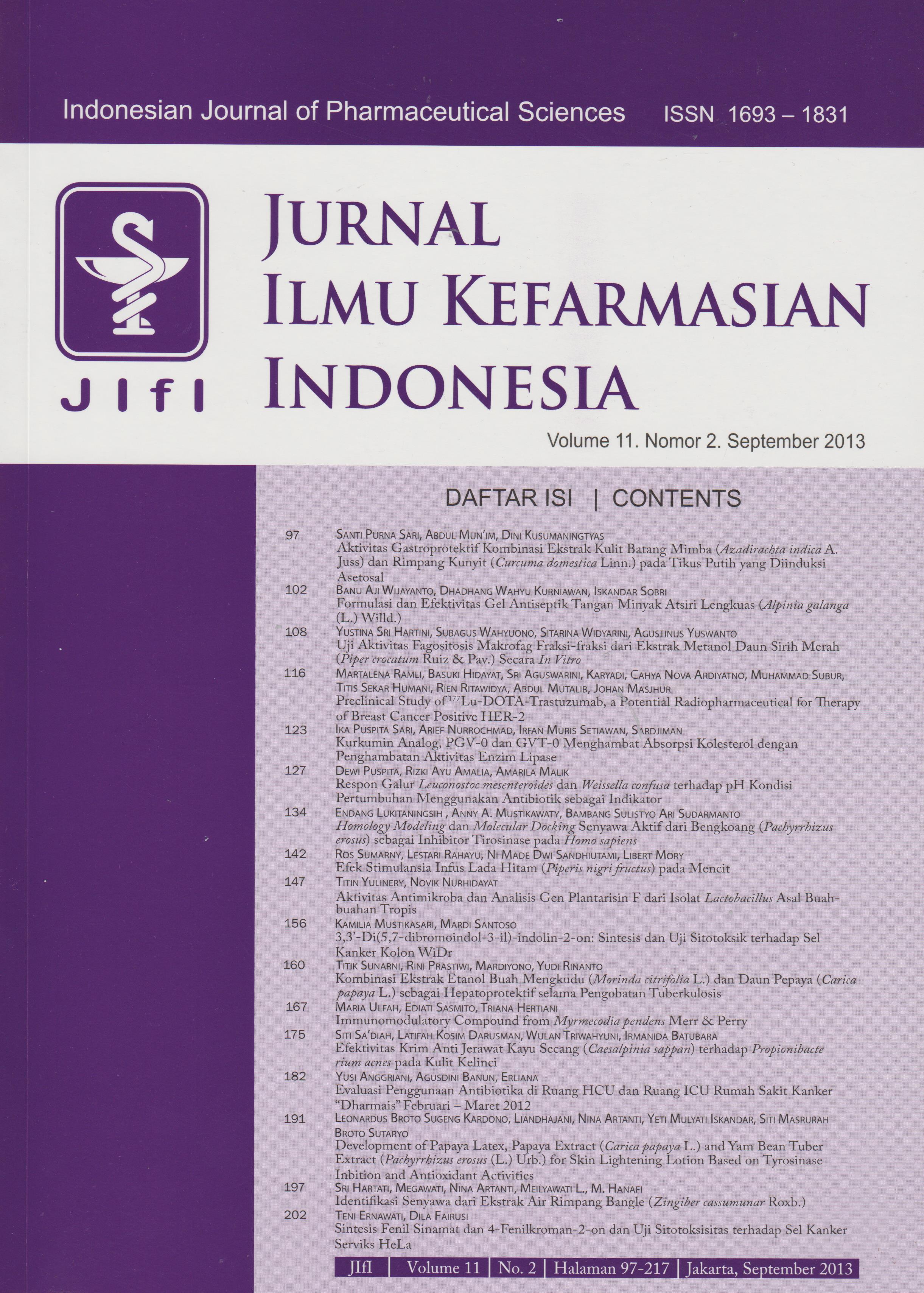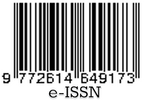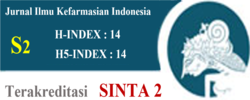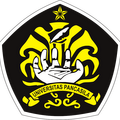3,3’-Di(5,7-dibromoindol-3-yl)-indolin-2-one: Synthesis and Cytotoxic Assays against WiDr Colon Cancer Cells
Abstract
Colon cancer is one of the causes of death in the world of concern, because until now there has not been found specific drug for its treatment. Therefore, the study aimed to synthesize compounds that have the potential as a novel anticancer compound derivative such as 3,3’-di (indol-3-yl) indolin-2-one is required. Synthesis was done by reacting 5,7-dibromoindole and isatin in methanol with an acid catalyst to produce 3,3’-di (5,7-dibromoindol-3-yl)-indolin-2-one compound with a yield of 48%. 3,3 ‘-di (5,7-dibromoindol-3-yl)-indolin-2-one is cytotoxic against colon cancer cell line WiDr with IC50 of 6.64 μM.
References
2. Astuti P, Alam G, Hartati MS, Sari D, Wahyuono S. Uji sitotoksik senyawa alkaloid dari spons Petrosia sp.: Potensial pengembangan sebagai antikanker. Majalah Farmasi Indonesia. 2005.16(1):58-62.
3. Yoo M, Choi S, Choi KY, Yon GH, Chae JC, Kim D, Zylstra GJ, Kim E. Trisindoline synthesis and anticancer activity. Biochemical and Biophysical Research Communication. 2008.376:96-99.
4. Kamal A, Srikanth YVV, Khan MNA, Shaik TB, Ashraf M. Synthesis of 3,3-diindolyl oxyindoles effi ciently catalysed by FeCl3 and their in vitro evaluation for anticancer activity. Bioorg Med Chem Lett. 2010. 20(17):5229–31.
5. Mustikasari K, Santoso M. Sintesis 3,3’-Di(5-bromo-N-metilindol-3-il)-5-bromoindolin-2-ona dan uji sitotoksisitasnya terhadap sel Vero. Jurnal Ilmiah Berkala Sains dan Terapan Kimia. 2012.6(1):1-10.
6. Meiyanto E, Susidarti RA, Handayani S, Rahmi F. Ekstrak etanolik biji buah pinang (Areca catechu L.) mampu menghambat proliferasi dan memacu apoptosis sel MFC-7. Majalah Farmasi Indonesia. 2008.19(1):12-19.
Licencing
All articles in Jurnal Ilmu Kefarmasian Indonesia are an open-access article, distributed under the terms of the Creative Commons Attribution-NonCommercial-ShareAlike 4.0 International License which permits unrestricted non-commercial used, distribution and reproduction in any medium.
This licence applies to Author(s) and Public Reader means that the users mays :
- SHARE:
copy and redistribute the article in any medium or format - ADAPT:
remix, transform, and build upon the article (eg.: to produce a new research work and, possibly, a new publication) - ALIKE:
If you remix, transform, or build upon the article, you must distribute your contributions under the same license as the original. - NO ADDITIONAL RESTRICTIONS:
You may not apply legal terms or technological measures that legally restrict others from doing anything the license permits.
It does however mean that when you use it you must:
- ATTRIBUTION: You must give appropriate credit to both the Author(s) and the journal, provide a link to the license, and indicate if changes were made. You may do so in any reasonable manner, but not in any way that suggests the licensor endorses you or your use.
You may not:
- NONCOMMERCIAL: You may not use the article for commercial purposes.
This work is licensed under a Creative Commons Attribution-NonCommercial-ShareAlike 4.0 International License.





 Tools
Tools





















